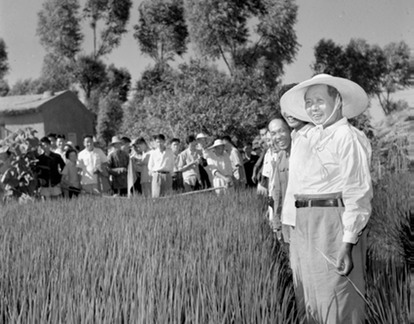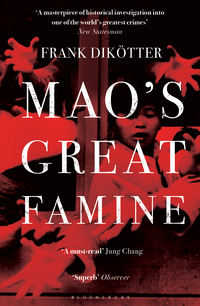History Book Club, August 2010
Some of history's most horrendous population crashes were the result of disease—the 14th-century Black Death, the nearly total extermination of the indigenous peoples of the Americas by smallpox, measles and influenza in the 16th century, and the Spanish flu of 1918 come to mind. Other great slaughters were the consequence of warfare; World Wars I and II both counted their victims in the tens of millions. But one such disaster can be attributed entirely to the megalomania and bizarre policy directives of a single individual: Mao Zedong’s “Great Leap Forward” and the ensuing famine of 1958-62.
Conventional accounts of that disaster have tended to place the death toll at around 20 to 30 million people; in this stunningly comprehensive account, modern Chinese historian Frank Dikötter suggests that the true figure probably approached 45 million. How, one wonders, could such a cataclysm have occurred? Dikötter for the first time supplies authoritative answers, based on exhaustive research in local and provincial archives, unpublished memoirs, personal interviews and carefully scrutinized contemporary accounts. It is an amazing story.
In the late 1950s, Mao Zedong was not a happy man. With the 10th anniversary of the founding of the People’s Republic approaching, he should have been brimming with pride. But he had had to purge hundreds of thousands of disgruntled intellectuals, relations with the Soviet Union were deteriorating, peasants were resisting collectivization, and the revolution seemed to have stalled. The solution? A Great Leap Forward that would propel China past Great Britain in industrial production and cement China’s leadership of the Socialist world. The entire country was mobilized in a series of mad schemes: Huge but ill-designed water control projects strove to “conquer nature”; farm communities were organized into vast, inefficient collectives; “back yard steel mills” melted down cooking pots; “deep plowing,” supposed to increase crop yields dramatically, led to crop failures instead. Some policies almost defy belief: millions of homes were demolished so that their mud-brick walls could be ground up for fertilizer; tens of millions of sparrows were killed to keep them from eating crops (which were then ravaged by insects). Sycophantic senior party leaders competed in promising wildly inflated results, while the few who expressed doubts were ruthlessly shunted aside.
Of course it all went horribly wrong. Millions of people were literally worked to death digging canals and building dams, while even more died of starvation or malnutrition-related diseases. Others who resisted the insanity were executed for grain-hoarding or malingering. This book is a grim, mesmerizing, astonishing account of those terrible years, when officials reported record-breaking harvests even as ordinary folk scavenged meat from the corpses of their neighbors.
Mao’s reputation as “a great revolutionary” who “made some mistakes” will not survive the publication of this book. He was, as Frank Dikötter makes devastatingly clear, one of the great monsters of world history. China has yet to come to terms with his legacy.

